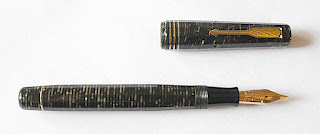 |
| View of the house from the back |
9 February 2017
We began the day in the Road Scholar way with a superb
lecture by Dr. Carlos Alzugaray, one of those scholar/diplomats that represent,
in one way and another, the best of any nation. This presentation resonated for
me, given my background having taught American foreign policy for so many
years. The presentation rather brilliantly combined a tour d’horizon with a
constructivist theoretical approach.
Then we were off to the fine arts museum, a most
interesting excursion. They do not, of course, allow phgotography inside the
museum, which is unfortunate. The guide, a curator, gave us a historical tour
of Cuban art. What struck me most was the degree to which protest art was hung,
here on the walls of the official national museum. If the building looks
vaguely familiar, it was built in the mid-1950s and patterned on Frank Lloyd
Wright’s design for the Guggenheim Museum in New York.
 |
| Our curator/guide, Jim, and José confer |
After the tour, lunch, and a stroll along the fabled Malecon
 |
| The walkway still shows damage from the hurricanes of 2005 and 2012 |
From there came the main event of the day, a visit to Ernest
Hemingway’s farm Finca Vigia (Lookout Farm).
Hemingway spent the last twenty years of his life here with
both his third wife, Martha Gellhorn, and his last wife, Mary. As with anything
related to Papa, there are a multitude of stories connected to the house and as
with Cuban-American relations there is a tangled story connected to the Cuban
acquisition of the house. For years, apparently, the 1886 building and its
contents, supposedly as Ernest and Mary left them in July 1960, were endangered
by neglect.
Hemingway was a supporter of the revolution and was a hero to the revolutionaries and after his death the government Mary negotiated a handover to the government that may or may not have been coerced. Regardless, today the building stands much as they left it. Visitors cannot go through the house, but the expansive windows are open and afford a good view of their life in what seems like paradise.
 |
| The entry |
 |
| From the front, the view to the back |
 |
| At the back, Hemingway's office |
 |
| As in Key West, Hemingway wrote in a tower, behind and to the side of the house |
 |
| The guard offered to shoot the inside of the tower office for me |
 |
| The typewriter |
Also enshrined here is Hemingway’s fishing boat, Pilar, from
which he launched a brief World War II effort to hunt German submarines
operating in the Caribbean.
 |
| Fantasies |
























Comments